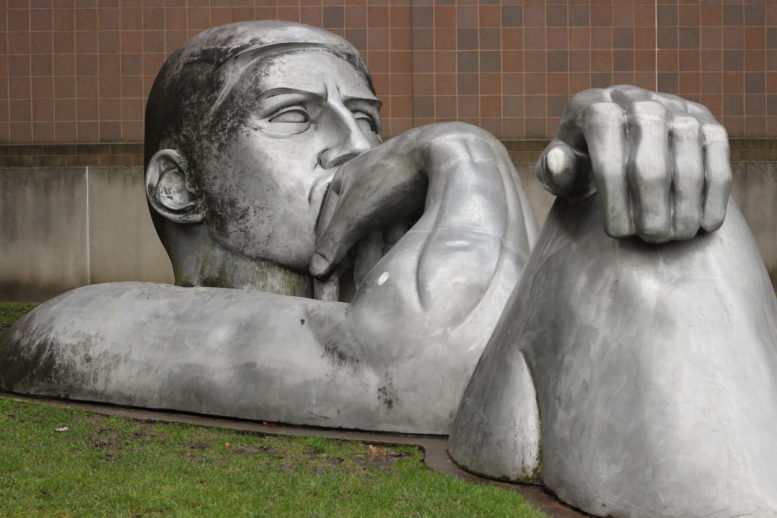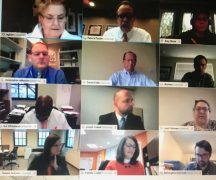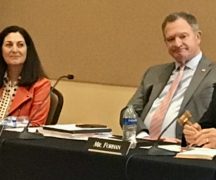By DAVID DUPONT
BG Independent News
The challenges facing Bowling Green State University and other institutions of higher education predate COVID-19 and will continue long after the virus is controlled.
The BGSU Board of Trustees used part of its retreat last week to hear an analysis of where the higher education stands.
For almost two and half hours, Matthew Pellish, managing director of EAB, a higher education research and technology firm that works with almost 1,000 institutions, took the trustees on a deep dive into where higher ed stands now and is headed.
Here’s some of the insights he provided in “State of the Sector: Reinventing Higher Education in the Shadow of COVID-19”:
Higher Ed had issues before COVID
“Even a year ago there were a lot of challenges to the higher ed model,” Pellish said.
Facing an impending demographic dip in the number of high school graduates, many schools turned to increased graduate programs.
That was seen at BGSU with this emphasis on professional graduate programs aimed at working adults and often provided online.
Nationally the initial “solid growth” in those programs, Pellish said, has flattened.
Higher education is also facing increasing pressure from students and families over the cost of education, and whether it is worth the investment. Through the 1990s and 2000s, he said, families and students were willing to pay more and more to attend college. When the Great Recession hit in 2008, that began to change and enrollments began to decline.
“Students are looking for value,” he said. “What is the outcome and the cost I’m willing to pay for it?”
And some colleges, usually small private schools in the Northeast, particularly New England, were closing their doors because of the growing pressures
2020’s triple whammy
Then came 2020 with the coronavirus pandemic and the resulting “light speed recession,” Pellish said.
Then came the social unrest as protests over the deaths of Black Americans at the hands of police spread.
Black Lives Matter may be the largest movement in U.S. history with more than 20 million Americans protesting.
The movement also posed questions about equity in education, not just in terms of enrollment but also the disparity in graduation rates.
“This is the world in which you’re going to have to operate in in the future,” Pellish told the trustees.
Ups & downs
In 2020, most of higher education saw a 16.1 percent decline in undergraduate enrollment with community colleges seeing the greatest drop, 22.7 percent.
Public four-year institutions such as BGSU saw a 13.7 percent decline.
Private for-profit schools, however, experienced a 3.7 percent increase. They often, Pellish said, appear to be cheaper on the front end, but when low-graduation rates are considered, that proves not to be the case.
In graduate education both public universities and for-profits saw an increase, 4 percent for publics and 9.3 percent for for-profit schools.
The growth is in online programs which offer a greater flexibility with enrollment in traditional in person graduate programs declining.
Employment drops
One of the effects of the pandemic was a steep decline in employment in higher education. The sector shed 340,000 jobs from February to August. That’s where many, including BGSU, had to go to reduce expenses, given labor costs represent 65-70 percent of higher ed budgets.
While there’s been an uptick as the economy has opened up a bit, Pellish does not believe it will completely rebound.
Also, much of the hiring may be in new positions as universities rethink what is needed for changing conditions.
Not radical change
Despite some expectations that COVID would lead to a radical restructuring of higher education, Pellish said, that does not appear likely. Instead institutions are more likely to recalibrate their operations. Looking for ways to be more efficient. Looking for opportunities to better use technology in instruction and operations. Thinking about the evolving roles of teaching, research, and service.
Changes in residential life
Spending on new dorms and other facilities related to residential life is going down, as students and families start to rethink the attractiveness of that model.
On one hand the shift to online learning in the spring, reminded students of the value of interacting with faculty and fellow students in person.
On the other hand, they are also realizing that being a residential student is expensive and are questioning the return for that investment.
Equity mission unfulfilled
Pellish said that higher education’s equity mission has become unfulfilled. While institutions have been discussing this for years, it is going to have to be a core value.
COVID-19 only accentuated the divisions.
Because of disruptions in public schools in spring, fewer students of color applied. That’s seen in the drop in community college enrollment.
Students of color were also disproportionately affected by the switch to online teaching, often lacking the technology and broadband needed to complete remote learning. This led to a cascading series of problems – bad grades, poor academic experiences, the inability to register for the new semester.
Students from underrepresented populations also experience more food and housing insecurity.
Pellish said a holistic approach is necessary. It starts with promoting and facilitating these students enrolling. It requires maximizing financial support for students in need. Once students are on campus, they need to receive academic and career support.
Universities need to implement inclusive teaching practices. Pellish noted that during the years when the number of students of color on campuses were increasing the number of faculty and staff of color did not.
And colleges need to meet those basic needs an encourage a sense of belonging and engagement.
Institutions that do this, Pellish said, will stand out in the market.





